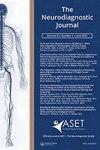Review of “Oxford Textbook of Neurocritical Care,” edited by Martin M. Smith, Giuseppe G. Citerio, and W. Andrew I. Kofke
Jacquelyn M Polito
求助PDF
{"title":"Review of “Oxford Textbook of Neurocritical Care,” edited by Martin M. Smith, Giuseppe G. Citerio, and W. Andrew I. Kofke","authors":"Jacquelyn M Polito","doi":"10.1080/21646821.2022.2113322","DOIUrl":null,"url":null,"abstract":"No doubt rapid advancements in technology have had significant impact on medical diagnosis and treatment. Online access to current research is important for staying current and yet, the Oxford Textbook of Neurocritical Care, edited by Martin Smith, Giuseppe Citerio and W. Andrew Kofke, provides an in-depth foundation of neuropathophysiology for providers in the neurocritical care setting. Divided into 3 main parts, the text is researched and written by more than 60 experts in their respective fields. While disorders of the Central Nervous System (CNS) provide the focus for neurological care, this text also defines the role that complications from respiratory failure and other organ system failures play in patient outcomes. Caring for the neurocritical patient requires a multidisciplinary approach to understanding pathophysiology, treatment, and prognosis. It is essential that healthcare providers, from technologists to nurses to physicians, understand these interactions. Part I of the text introduces neurocritical care and the basic principles of the pathophysiology of severe CNS disorders and the effects on or by other organ systems, such as respiratory failure, intracranial pressure (ICP) and cerebral perfusion, as well as the efficacy of monitoring and imaging techniques. The neuroanatomy of cell structure, cerebral blood flow, cerebral spinal fluid, and cerebral metabolism are discussed as they relate to traumatic brain injury, edema, hemorrhage, stroke, seizures, ischemia and more. Pharmacological treatments are outlined, including antiepileptic drugs, anesthetic agents, analgesics, barbiturates, catecholamines, calcium channel blockers and more. Further, attention is given to the considerations of cardiovascular and respiratory effects on life-threatening CNS disease as related to mechanical ventilation and oxygenation. This section concludes with an examination of the ethical and legal issues inevitably encountered in treating critically ill patients. Often providers are faced with dilemmas regarding whether to withhold or withdraw life-sustaining treatments balanced against resulting quality of life or death. Part II, aptly named Monitoring, evaluates the important physiologic parameters necessary to monitor for signs of improvement or decline in a patient, as well as the available diagnostic tools to guide in medical decision-making. Some of the areas The Neurodiagnostic Journal, 62: 181–182, 2022 © 2022 ASET – The Neurodiagnostic Society ISSN: 2164-6821 print / 2375-8627 online DOI: https://doi.org/10.1080/21646821.2022.2113322","PeriodicalId":22816,"journal":{"name":"The Neurodiagnostic Journal","volume":"62 1","pages":"181 - 182"},"PeriodicalIF":0.0000,"publicationDate":"2022-07-03","publicationTypes":"Journal Article","fieldsOfStudy":null,"isOpenAccess":false,"openAccessPdf":"","citationCount":"0","resultStr":null,"platform":"Semanticscholar","paperid":null,"PeriodicalName":"The Neurodiagnostic Journal","FirstCategoryId":"1085","ListUrlMain":"https://doi.org/10.1080/21646821.2022.2113322","RegionNum":0,"RegionCategory":null,"ArticlePicture":[],"TitleCN":null,"AbstractTextCN":null,"PMCID":null,"EPubDate":"","PubModel":"","JCR":"Q3","JCRName":"Health Professions","Score":null,"Total":0}
引用次数: 0
引用
批量引用
Abstract
No doubt rapid advancements in technology have had significant impact on medical diagnosis and treatment. Online access to current research is important for staying current and yet, the Oxford Textbook of Neurocritical Care, edited by Martin Smith, Giuseppe Citerio and W. Andrew Kofke, provides an in-depth foundation of neuropathophysiology for providers in the neurocritical care setting. Divided into 3 main parts, the text is researched and written by more than 60 experts in their respective fields. While disorders of the Central Nervous System (CNS) provide the focus for neurological care, this text also defines the role that complications from respiratory failure and other organ system failures play in patient outcomes. Caring for the neurocritical patient requires a multidisciplinary approach to understanding pathophysiology, treatment, and prognosis. It is essential that healthcare providers, from technologists to nurses to physicians, understand these interactions. Part I of the text introduces neurocritical care and the basic principles of the pathophysiology of severe CNS disorders and the effects on or by other organ systems, such as respiratory failure, intracranial pressure (ICP) and cerebral perfusion, as well as the efficacy of monitoring and imaging techniques. The neuroanatomy of cell structure, cerebral blood flow, cerebral spinal fluid, and cerebral metabolism are discussed as they relate to traumatic brain injury, edema, hemorrhage, stroke, seizures, ischemia and more. Pharmacological treatments are outlined, including antiepileptic drugs, anesthetic agents, analgesics, barbiturates, catecholamines, calcium channel blockers and more. Further, attention is given to the considerations of cardiovascular and respiratory effects on life-threatening CNS disease as related to mechanical ventilation and oxygenation. This section concludes with an examination of the ethical and legal issues inevitably encountered in treating critically ill patients. Often providers are faced with dilemmas regarding whether to withhold or withdraw life-sustaining treatments balanced against resulting quality of life or death. Part II, aptly named Monitoring, evaluates the important physiologic parameters necessary to monitor for signs of improvement or decline in a patient, as well as the available diagnostic tools to guide in medical decision-making. Some of the areas The Neurodiagnostic Journal, 62: 181–182, 2022 © 2022 ASET – The Neurodiagnostic Society ISSN: 2164-6821 print / 2375-8627 online DOI: https://doi.org/10.1080/21646821.2022.2113322
Martin M.Smith、Giuseppe G.Citerio和W.Andrew I.Kofke主编的《牛津神经危重症护理教材》综述
毫无疑问,技术的快速进步对医学诊断和治疗产生了重大影响。在线获取最新研究对于保持最新研究很重要,然而,由Martin Smith、Giuseppe Citerio和W.Andrew Kofke编辑的《牛津神经危重症护理教科书》为神经危重症治疗环境中的提供者提供了深入的神经病理学基础。全文分为三个主要部分,由60多位各自领域的专家进行研究和撰写。虽然中枢神经系统疾病是神经护理的重点,但本文也定义了呼吸衰竭和其他器官系统衰竭并发症在患者预后中的作用。照顾神经危重症患者需要多学科的方法来理解病理生理学、治疗和预后。至关重要的是,从技术人员到护士再到医生,医疗保健提供者都要了解这些互动。本文的第一部分介绍了神经重症监护和严重中枢神经系统疾病的病理生理学的基本原理,以及对其他器官系统的影响,如呼吸衰竭、颅内压(ICP)和脑灌注,以及监测和成像技术的疗效。讨论了细胞结构、脑血流量、脑脊液和脑代谢的神经解剖学,因为它们与创伤性脑损伤、水肿、出血、中风、癫痫发作、缺血等有关。概述了药理学治疗方法,包括抗癫痫药物、麻醉剂、止痛药、巴比妥类药物、儿茶酚胺、钙通道阻滞剂等。此外,还注意到与机械通气和氧合有关的心血管和呼吸系统对危及生命的中枢神经系统疾病的影响。本节最后探讨了在治疗危重患者时不可避免地遇到的伦理和法律问题。提供者经常面临着两难的选择,即是否停止或撤回维持生命的治疗,以平衡由此产生的生活或死亡质量。第二部分,恰当地命名为监测,评估监测患者改善或下降迹象所需的重要生理参数,以及指导医疗决策的可用诊断工具。部分领域《神经诊断杂志》,62:1181–1822022©2022 ASET——神经诊断学会ISSN:2164-6821印刷/2375-8627在线DOI:https://doi.org/10.1080/21646821.2022.2113322
本文章由计算机程序翻译,如有差异,请以英文原文为准。


